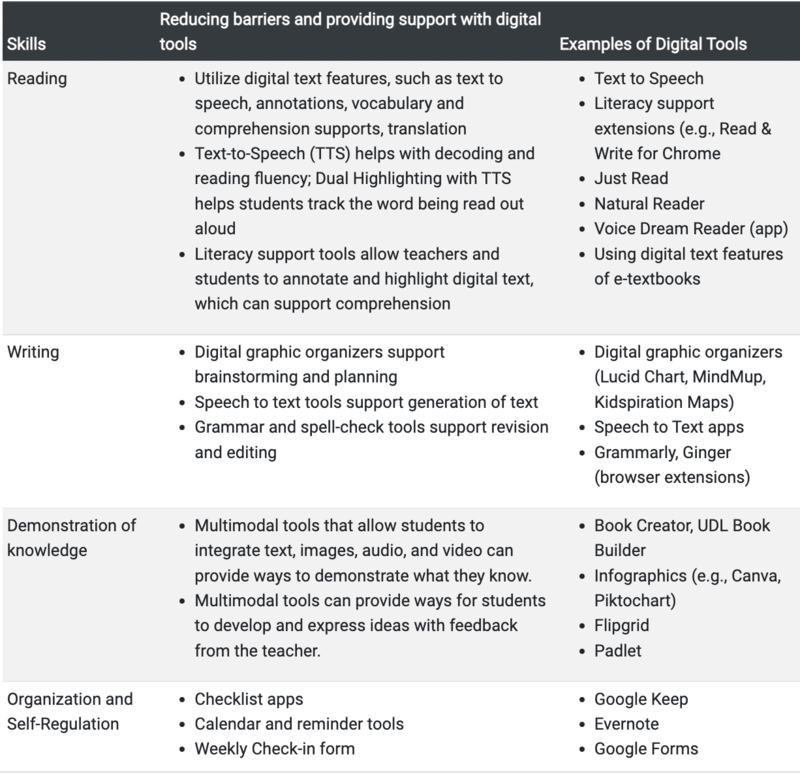e-Learning Ecologies MOOC’s Updates
Update #7: Nearpod and UDL
Schools and institutions (as well as the individual) who have access to the internet and resources to invest in software for differentiation have a myriad of choices to make. While there are an abundance of educational applications and platforms available, an emphasis in Universal Design and accessibility must be on the forefront of the consideration process (Rao, 2021). Universal Design in Learning (UDL) is a method by which all students can benefit, a framework that is flexible and able to adjust to the different levels and abilities of the learner. This UDL concept has given birth to assistive technologies, some of which are chronicled in the below image:
A software that I want to investigate and discuss further is called Nearpod. This is designed mainly for K-12 students and works to make static presentations and lessons interactive. Nearpod can help improve student engagement by adding gamification, quiz elements, and interactive elements such as matching and card flips to a lesson (Nearpod, n.d.). I have had the privilege of working as a teacher in a district that provided this software to us, most likely because it was a virtual school. With my brick-and-mortar school experience, we only had access to antiquated tools (like Microsoft suite, or Google) to create our lessons for students.
One of the benefits of Nearpod (especially with an online learning atmosphere) is improved engagement among the students. It breaks up the monotony of formulaic online courses that include a presentation and written response or quiz. There are also visually-please graphics and animations that help the students stay engaged, and would arguably assist students with attention disorders in engaging with the material.
A large drawback of this software is that it is costly for school districts, which is a large part of why I assume I only experienced it with the virtual school district. Another is that, while studies have shown increased engagement across the board with students (either face-to-face or virtual), there is yet to be a documented connection between Nearpod and improving inclusivity (Buttery, 2021). I would argue that it is currently a useful and high-quality tool for schools to invest in, and has been shown to help with UDL.
Circling back to the final affordance in this course, I think that using a program such as Nearpod is a step in the right direction. It promotes classroom community during synchronous learning where students can complete the games together or even compete against each other, but doesn’t risk disengagement through the accessibility features.
Buttrey, Kristina. "Inclusion, Engagement, and Nearpod: Providing a Digital Alternative to Traditional Instruction." Kentucky Teacher Education Journal: The Journal of the Teacher Education Division of the Kentucky Council for Exceptional Children 8.1 (2021): 2.
How nearpod works. Nearpod. (n.d.). Retrieved January 10, 2023, from https://nearpod.com/how-nearpod-works
Rao, K., (2021, January 1). Inclusive instructional design: Applying UDL to online learning. The Journal of Applied Instructional Design. Retrieved January 10, 2023, from https://edtechbooks.org/jaid_10_1/preparing_teachers_f



good